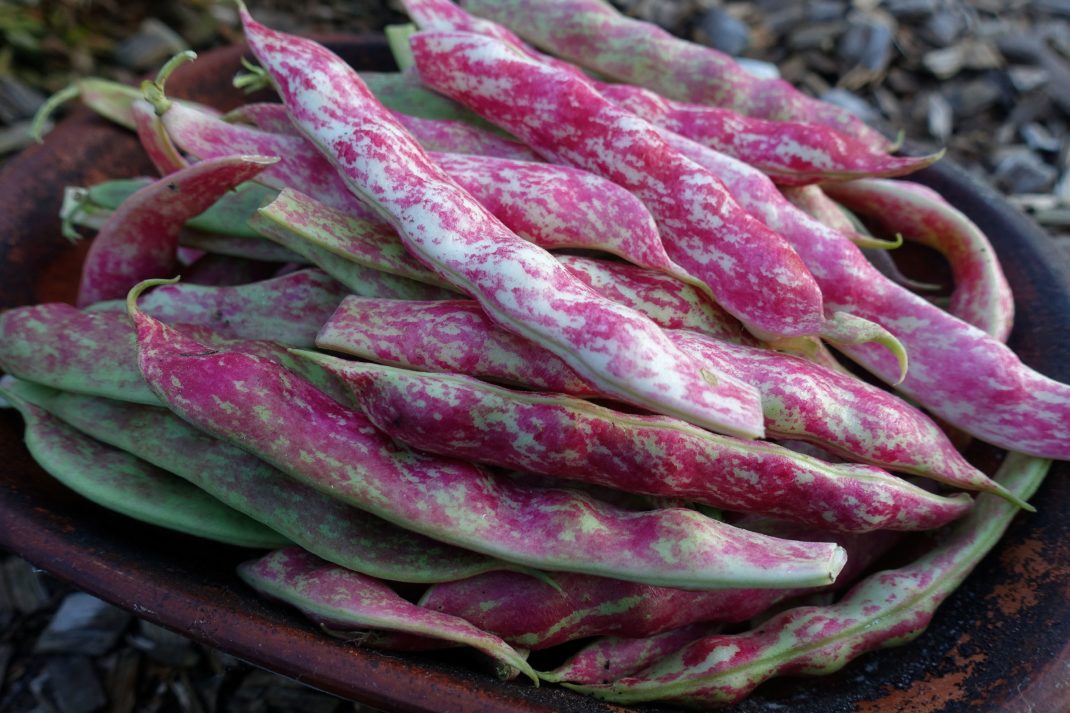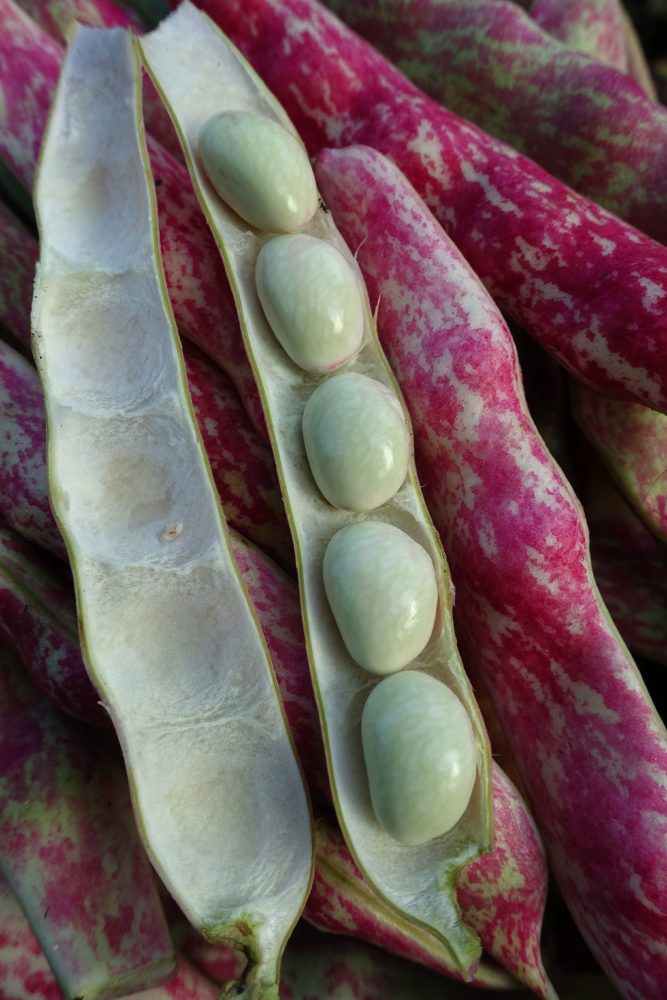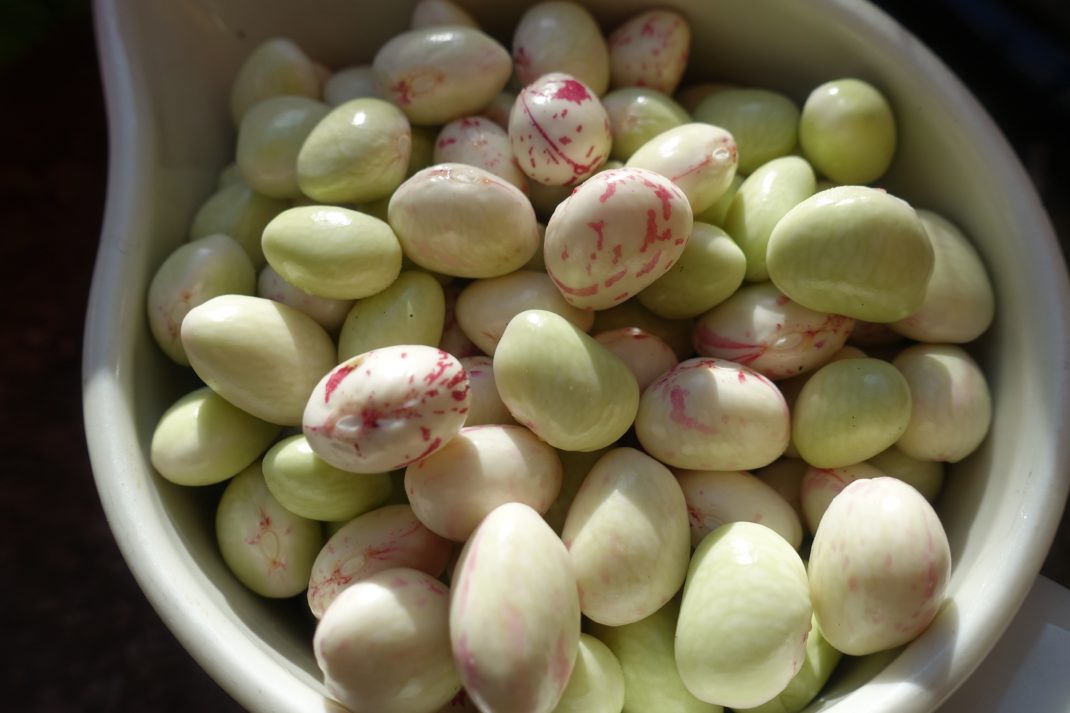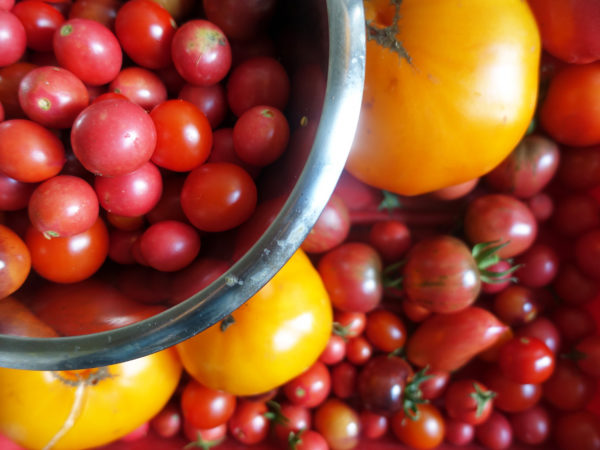Growing borlotti beans in cold climates
These lovely borlotti beans are such a joy. They look absolutely beautiful and taste great too! But can you really grow these beans in cold climates too? The answer is yes!

These pods are so beautiful, I almost feel bad about harvesting them! The color will fade when the pod dries though.
Growing beans in cold climates actually works surprisingly well. The bean season is ending up here in northern Scandinavia, so I decided to pick and freeze the beautiful borlotti beans in my garden. It's time to pick the beans when the pod starts feeling a bit soft and squishy. The pods might go bad if you leave them on the bush when it's wet and rainy outside, so don't wait too long. In a perfect world, the beans should, of course, be dry.
I didn't get many beans at all this year, but it's not exactly a surprise since I sowed the beans so late and actually neglected them a bit too. All in all, I'm happy about what I got and already decided to use them for a delicious bean dip later in fall.
Borlotti beans
- tall or bush-like plant
- beautiful speckled pods and beans
- the beans turn brown after they dry
- easy to grow
- high yield
- great to store
Borlotti is a shelling bean, a type that you are meant to dry and then pick the beans from the pod. But you can eat it in several stages of development too, which I think is really great. You can, for example, eat the pods fresh or pick the (unripe) beans from the pod and cook them.
Read more about beans: How to grow fava beans
Growing borlotti beans in cold climates
I recently got a few questions about whether it's possible to grow borlotti beans in cold climates, and if there's anything particular you need to think about. This is a great question, so I decided to write a bit more about it here on the blog.
Yes, you can definitely grow borlotti beans in cold climates, but there are a few things you need to take into consideration:
First of all, beans generally require a long and warm summer. The beans might even need a row cover to get some extra heat, depending on how cold it is where you live. On a regular summer, we don't need it here in the south of Sweden.
I try to be very thorough when I pick the right variety. After all, I need varieties that are known to work in a colder climate. So if you live somewhere far north, for example, you might want to buy seeds of local varieties instead of getting your beans from a foreign provider. Borlotti beans generally take a short time to grow and develop. It only takes around three months from sowing to harvest here in southern Sweden, zone 3.

The lovely beans are so delicious, just boil them for around ten minutes and eat with butter. Growing beans in cold climates really isn't that big of a deal.
Tall or smaller varieties
You can find both tall and smaller varieties of borlotti beans. In my experience, it's worth growing both. The taller varieties are great if you want to get a lot of beans even if you don't have that much space in your beds. But if you don't want to bother with propping up your plants, you could of course also pick a smaller, more bushlike variety. Above all, I think that the low varieties are very convenient since they practically take care of themselves.
Learn more about beans: Guide to growing beans
Pre-grow borlotti
I prefer pre-growing many of my beans and then planting them in a particularly warm spot in my garden. Since I want the beans to ripen on the plants, they need a nice and long season. We can't affect the weather itself, but you can take control of how long you keep the beans in the beds. I want to pre-grow the beans to make sure that they have as much time as possible to develop. You can use plug trays with extra deep cells for this purpose. If you don't have a plug tray around, you could also use toilet paper rolls. You can pre-grow the plants in a warm spot, for example, a greenhouse, from May forward (at least here in zone 3.)

I boil the beans and then I freeze them.
I really love growing beans, since they require so little. You basically just need to harvest them when the time is right. At this point in time, you do however need to work quickly. As a result, I try to harvest the beans when they are basically ripe and almost dry. You need to do this before the bean pods break open and the beans fall out though.
If you don't have much time, you could always cut the small bean bushes and hang them upside down inside a paper bag. The beans dry where they hang and the bag will catch the beans that fall out of their pods.
You can use borlotti beans for so many dishes. Baked beans are a favorite here at home. That's one of the reasons why I grow plenty of beans in my garden. I also use them for salads, stews, soups, and beans dips.
More content about beans: How I grow broad beans in my garden
I decided to mainly grow snap beans and a lima bean variety from the U.S this year. However, I will go for more borlotti beans next year though. It's such a delicious and good-looking bean after all!
/Sara Bäckmo



Leave a Reply
You must be logged in to post a comment.